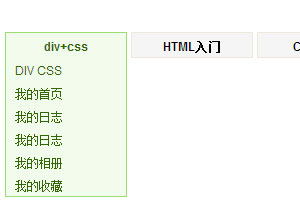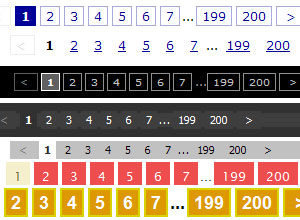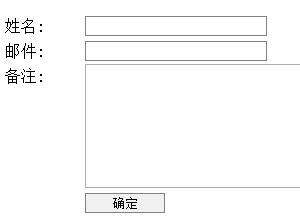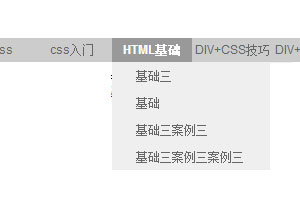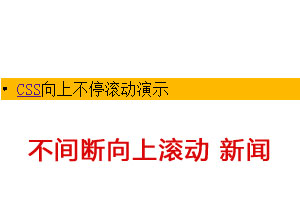手写MQ框架(四)-使用netty改造梳理
一、背景
书接上文手写MQ框架(三)-客户端实现 ,前面通过web的形式实现了mq的服务端和客户端,现在计划使用netty来改造一下。前段时间学习了一下netty的使用。大概有一些想法。
netty封装了socket的使用,我们通过简单的调用即可构建高性能的网络应用。我计划采用以下例子来对gmq进行改造。
二、netty是什么
Netty是由JBOSS提供的一个java开源框架。Netty提供异步的、事件驱动的网络应用程序框架和工具,用以快速开发高性能、高可靠性的网络服务器和客户端程序。
netty是一个java框架,是网络编程框架,支持异步、事件驱动的特性,所以性能表现很好。
三、netty的简单实现
1、服务端
1)SimpleServerHandler
Handler是处理器,handler 是由 Netty 生成用来处理 I/O 事件的。
package me.lovegao.netty.learnw3c.mqdemo;
import io.netty.channel.Channel;
import io.netty.channel.ChannelHandlerContext;
import io.netty.channel.SimpleChannelInboundHandler;
import io.netty.channel.group.ChannelGroup;
import io.netty.channel.group.DefaultChannelGroup;
import io.netty.util.concurrent.GlobalEventExecutor;
public class SimpleServerHandler extends SimpleChannelInboundHandler<String> {
public static ChannelGroup channels = new DefaultChannelGroup(GlobalEventExecutor.INSTANCE);
@Override
public void handlerAdded(ChannelHandlerContext ctx) throws Exception {
Channel incoming = ctx.channel();
System.out.println("[SERVER] - " + incoming.remoteAddress() + " 加入\n");
channels.add(ctx.channel());
}
@Override
public void handlerRemoved(ChannelHandlerContext ctx) throws Exception {
Channel incoming = ctx.channel();
System.out.println("[SERVER] - " + incoming.remoteAddress() + " 离开\n");
channels.remove(ctx.channel());
}
@Override
protected void channelRead0(ChannelHandlerContext ctx, String s) throws Exception {
Channel incoming = ctx.channel();
System.out.println("[" + incoming.remoteAddress() + "]" + s);
if(s == null || s.length() == 0) {
incoming.writeAndFlush("消息是空的呀!\n");
} else {
// MqRouter<?> mqRouter = JSONObject.parseObject(s, MqRouter.class);
// System.out.println(mqRouter.getUri());
String responseMsg = "收到了," + s + "\n";
incoming.writeAndFlush(responseMsg);
}
}
@Override
public void channelActive(ChannelHandlerContext ctx) throws Exception {
Channel incoming = ctx.channel();
System.out.println("SimpleChatClient:"+incoming.remoteAddress()+"在线");
}
@Override
public void channelInactive(ChannelHandlerContext ctx) throws Exception {
Channel incoming = ctx.channel();
System.out.println("SimpleChatClient:"+incoming.remoteAddress()+"掉线");
}
@Override
public void exceptionCaught(ChannelHandlerContext ctx, Throwable cause) throws Exception {
Channel incoming = ctx.channel();
System.out.println("SimpleChatClient:"+incoming.remoteAddress()+"异常");
cause.printStackTrace();
ctx.close();
}
}
2)SimpleServerInitializer
SimpleServerInitializer 用来增加多个的处理类到 ChannelPipeline 上,包括编码、解码、SimpleServerHandler 等。
package me.lovegao.netty.learnw3c.mqdemo;
import io.netty.channel.ChannelInitializer;
import io.netty.channel.ChannelPipeline;
import io.netty.channel.socket.SocketChannel;
import io.netty.handler.codec.DelimiterBasedFrameDecoder;
import io.netty.handler.codec.Delimiters;
import io.netty.handler.codec.string.StringDecoder;
import io.netty.handler.codec.string.StringEncoder;
public class SimpleServerInitializer extends ChannelInitializer<SocketChannel> {
@Override
protected void initChannel(SocketChannel ch) throws Exception {
ChannelPipeline pipeline = ch.pipeline();
pipeline.addLast("framer", new DelimiterBasedFrameDecoder(8192, Delimiters.lineDelimiter()));
pipeline.addLast("decoder", new StringDecoder());
pipeline.addLast("encoder", new StringEncoder());
pipeline.addLast("handler", new SimpleServerHandler());
System.out.println("SimpleChatClient:" + ch.remoteAddress() + "连接上");
}
}
3)SimpleServer
package me.lovegao.netty.learnw3c.mqdemo;
import io.netty.bootstrap.ServerBootstrap;
import io.netty.channel.ChannelFuture;
import io.netty.channel.ChannelOption;
import io.netty.channel.EventLoopGroup;
import io.netty.channel.nio.NioEventLoopGroup;
import io.netty.channel.socket.nio.NioServerSocketChannel;
public class SimpleServer {
private int port;
public SimpleServer(int port) {
this.port = port;
}
public void run() throws Exception {
EventLoopGroup bossGroup = new NioEventLoopGroup();
EventLoopGroup workerGroup = new NioEventLoopGroup();
try {
ServerBootstrap b = new ServerBootstrap();
b.group(bossGroup, workerGroup).channel(NioServerSocketChannel.class)
.childHandler(new SimpleServerInitializer()).option(ChannelOption.SO_BACKLOG, 128)
.childOption(ChannelOption.SO_KEEPALIVE, true);
System.out.println("SimpleChatServer 启动了");
ChannelFuture f = b.bind(port).sync();
f.channel().closeFuture().sync();
} finally {
workerGroup.shutdownGracefully();
bossGroup.shutdownGracefully();
System.out.println("SimpleChatServer 关闭了");
}
}
public static void main(String[] args) throws Exception {
int port;
if (args.length > 0) {
port = Integer.parseInt(args[0]);
} else {
port = 8080;
}
new SimpleServer(port).run();
}
}
2、客户端
1)SimpleClientHandler
package me.lovegao.netty.learnw3c.mqdemo;
import io.netty.channel.ChannelHandlerContext;
import io.netty.channel.SimpleChannelInboundHandler;
public class SimpleClientHandler extends SimpleChannelInboundHandler<String> {
@Override
protected void channelRead0(ChannelHandlerContext ctx, String s) throws Exception {
System.out.println("收到的信息:" + s);
}
}
2)SimpleClientInitializer
package me.lovegao.netty.learnw3c.mqdemo;
import io.netty.channel.ChannelInitializer;
import io.netty.channel.ChannelPipeline;
import io.netty.channel.socket.SocketChannel;
import io.netty.handler.codec.DelimiterBasedFrameDecoder;
import io.netty.handler.codec.Delimiters;
import io.netty.handler.codec.string.StringDecoder;
import io.netty.handler.codec.string.StringEncoder;
public class SimpleClientInitializer extends ChannelInitializer<SocketChannel> {
@Override
protected void initChannel(SocketChannel ch) throws Exception {
ChannelPipeline pipeline = ch.pipeline();
pipeline.addLast("framer", new DelimiterBasedFrameDecoder(8192, Delimiters.lineDelimiter()));
pipeline.addLast("decoder", new StringDecoder());
pipeline.addLast("encoder", new StringEncoder());
pipeline.addLast("handler", new SimpleClientHandler());
}
}
3)SimpleClient
package me.lovegao.netty.learnw3c.mqdemo;
import java.io.BufferedReader;
import java.io.InputStreamReader;
import io.netty.bootstrap.Bootstrap;
import io.netty.channel.Channel;
import io.netty.channel.EventLoopGroup;
import io.netty.channel.nio.NioEventLoopGroup;
import io.netty.channel.socket.nio.NioSocketChannel;
public class SimpleClient {
private final String host;
private final int port;
public SimpleClient(String host, int port) {
this.host = host;
this.port = port;
}
public static void main(String[] args) throws Exception {
new SimpleClient("localhost", 8080).run();
}
public void run() throws Exception {
EventLoopGroup group = new NioEventLoopGroup();
try {
Bootstrap bootstrap = new Bootstrap()
.group(group)
.channel(NioSocketChannel.class)
.handler(new SimpleClientInitializer());
Channel channel = bootstrap.connect(host, port).sync().channel();
BufferedReader in = new BufferedReader(new InputStreamReader(System.in));
while(true) {
String line = in.readLine();
if(line.equals("exit!")) {
break;
}
channel.writeAndFlush(line + "\r\n");
}
} catch(Exception e) {
e.printStackTrace();
} finally {
group.shutdownGracefully();
}
}
}
3、学习中的一些事
在我把教程上的代码略微改了一下,测试时发现客户端能够发出消息,服务端能够收到消息,服务端也走到了回复客户端的流程,但是客户端却收不到消息。还原代码后是正常的,想了半天,最后才发现是改代码的的时候漏掉了“\n”这个标识,以此导致客户端始终不打印消息。
四、netty如何运用到gmq中
1、运用有什么问题
netty只封装了网络交互,gmq整体使用了gmvc框架,而gmvc框架目前还无法脱离servlet。而我又不太想把之前写的代码全部改为自己new的方式。
2、解决方式
1)改造gmvc框架
对gmvc框架进行重构,使得能够脱离servlet使用。也就是将IOC功能剥离开。
优点:一步到位,符合整体的规划。
缺点:gmq的迭代会延迟一段时间。
2)暂时抛弃gmvc框架
暂时将目前依赖的gmvc框架给去除掉,优先完成gmq的迭代。待后期gmvc框架改造完成后再进行改造。
优点:能够尽早的完成gmq的功能。
缺点:先移除框架,后期再套上框架,相当于做了两次多余的功。费时费力。
3、结论
写框架就是为了学习,写GMVC、写GMQ目的都一样。时间宝贵,减少多余功,先对GMVC框架进行改造。
4、一些其他事
运用netty还有一个事,就是路由的问题。使用netty代替servlet,需要解决路由的问题。
五、准备改造GMVC
敬请期待……
如需转载,请注明文章出处和来源网址:http://www.divcss5.com/html/h58108.shtml


